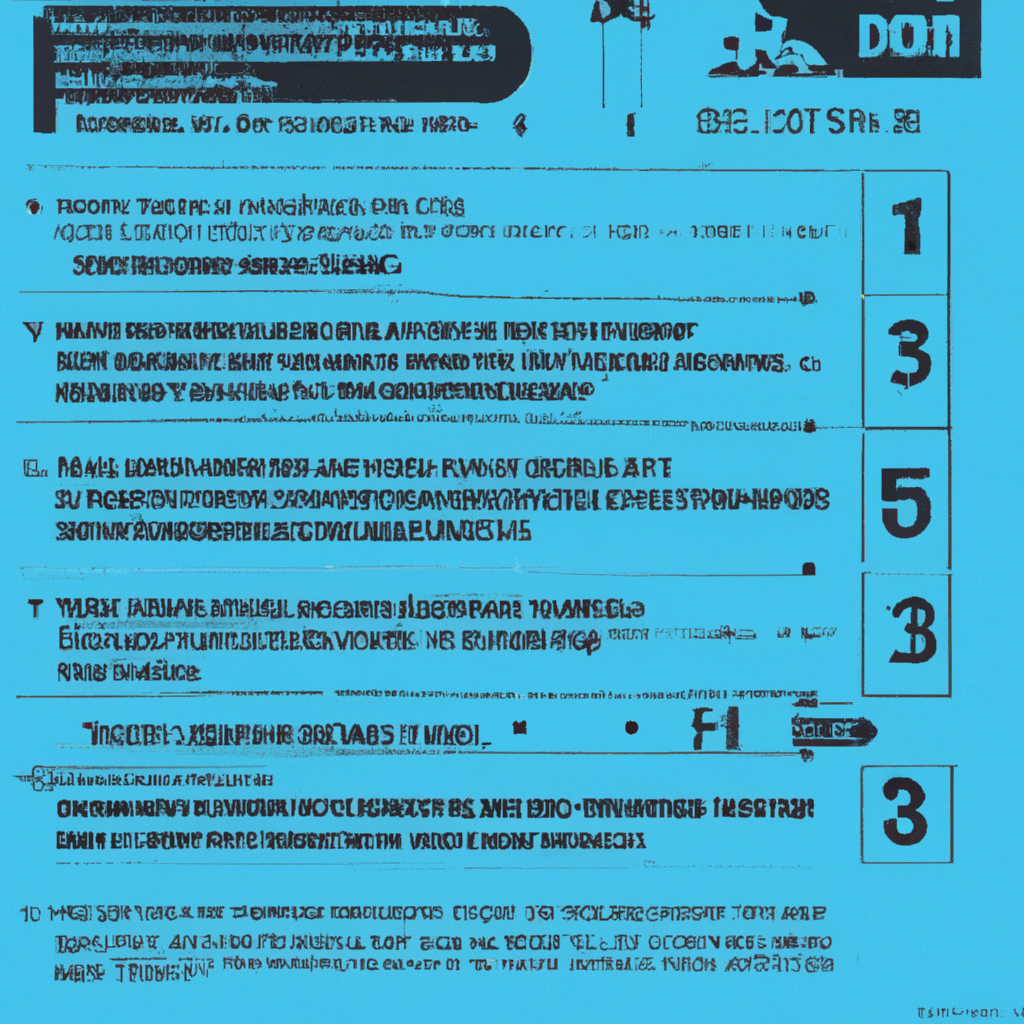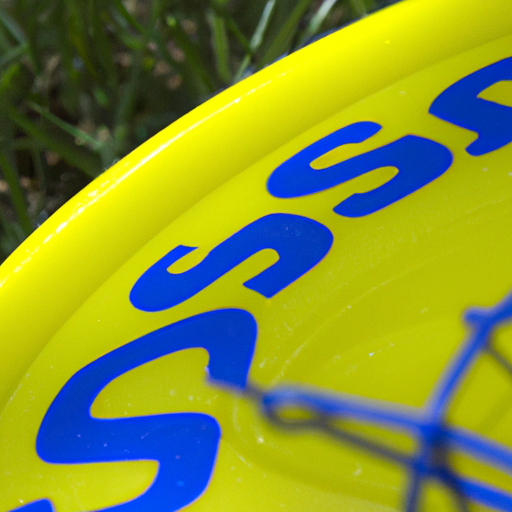We may earn money or products from the companies that may be mentioned in this post.
Whether you’re new to the sport or a seasoned disc golf enthusiast, understanding the concept of overstable discs is crucial to improving your game. In disc golf, “overstable” refers to the flight characteristics of a disc, specifically its tendency to fade or curve to the left for right-handed throwers (or right for left-handed throwers). This article will delve into the physics behind overstable discs, explaining how they can help you navigate challenging courses, conquer windy conditions, and ultimately enhance your disc golf experience. So grab your favorite overstable disc, and let’s explore the fascinating world of disc flight together.
Understanding the Concept of Overstable Discs in Disc Golf
Disc golf is a thrilling sport that combines the precision of golf with the excitement of throwing flying discs. One crucial aspect of disc golf is the selection of discs, as they come in various shapes, sizes, and designs to cater to different throwing styles and conditions. Among these discs, the concept of “overstable” plays a significant role in determining the flight characteristics and overall performance on the course.

Definition of ‘Overstable’ in Disc Golf
To understand the concept of “overstable” in disc golf, it is essential to grasp the underlying principle of stability in disc flight first. Stability refers to how a disc behaves in flight, specifically how it resists turning and fading at the end. An overstable disc, as the name suggests, is designed to exhibit more stability than other discs.
An overstable disc tends to hold its line throughout the flight, resisting turning and fading significantly. It will curve less to the right (for right-handed throwers) and finish with a predictable and consistent fade at the end. This stability is achieved through various design characteristics, including the disc’s rim shape, weight distribution, and plastic type.
Importance of Overstable Discs in Disc Golf
Overstable discs play a crucial role in the sport of disc golf, offering several advantages to players of all skill levels. One of the primary benefits of using overstable discs is their ability to combat the effects of wind. Wind can have a considerable impact on disc flight, causing less stable discs to turn and fade prematurely. However, overstable discs are specifically designed to resist these wind-induced forces, allowing players to maintain control and accuracy even in challenging weather conditions.
Furthermore, overstable discs excel in a variety of situations on the disc golf course. Their reliable and consistent flight characteristics make them ideal for executing precise shots, such as approaches and drives that require accuracy and control. Whether navigating tight fairways, battling against headwinds, or executing hyzer shots, overstable discs can provide the stability needed to conquer these challenging scenarios.
Key Characteristics of Overstable Discs
Several key characteristics distinguish overstable discs from their stable and understable counterparts. These features determine how the disc performs in flight and contribute to its overall stability. Understanding these characteristics is crucial when selecting the right overstable disc for your game.
The rim design and width of an overstable disc are significant factors that influence its stability. Generally, overstable discs have wider rims compared to stable or understable discs. This wider rim design enhances the disc’s ability to resist turning and provides more control during powerful throws.
Weight distribution is another crucial characteristic of overstable discs. These discs typically feature a more significant weight concentration towards the outer edge, further aiding their stability in flight. This weight distribution helps to neutralize any unwanted turning tendencies and promotes a consistent flight path.
Discs are made from different types of plastic, each with its unique characteristics. The choice of plastic can significantly impact a disc’s stability. Overstable discs are commonly made from stiffer and more durable plastic blends, such as champion or lucid plastic, which enhance their stability and longevity.
Stability ratings and flight numbers are standardized systems used by disc manufacturers to indicate a disc’s stability level. These ratings provide players with a quick reference when selecting discs. Overstable discs usually possess high stability ratings and lower numbers, such as 0 and 1, emphasizing their predictable and fade-heavy flight paths.

Flight Path of Overstable Discs
The flight path of an overstable disc follows a distinct pattern that sets it apart from stable and understable discs. Understanding this flight path is essential for effectively utilizing overstable discs in disc golf.
Upon release, overstable discs demonstrate high-speed stability, meaning they resist turning even at higher velocities. This characteristic ensures that the disc maintains a straighter flight for a more extended period before exhibiting any significant turn.
As the disc begins to slow down, it enters the fade phase, which characterizes overstable discs. The fade refers to the disc’s tendency to finish its flight with a predictable and consistent leftward curve (for right-handed throwers) before coming to a complete stop. This leftward finish helps players shape their shots and adds an extra level of control to their throws.
Another advantage of overstable discs is their ability to resist turnovers and anhyzer shots. Turnovers occur when discs unintentionally turn to the right (for right-handed throwers) during the flight instead of maintaining a straight path. Anhyzer shots, on the other hand, involve intentionally throwing the disc on a curved flight path to the right (for right-handed throwers). Overstable discs resist both these tendencies, allowing players to execute shots with more precision and accuracy.
Overstable Discs vs. Stable and Understable Discs
When comparing overstable discs to their stable and understable counterparts, it is crucial to understand the distinct flight characteristics of each category. Stable discs have a relatively neutral flight path and offer a balance between the tendencies of turning and fading. Understable discs, on the other hand, have a natural tendency to turn to the right (for right-handed throwers) during flight, with minimal fading.
Overstable discs differ from both stable and understable discs by providing a flight path with stronger fade tendencies. While stable discs may have a slight fade at the end, overstable discs exhibit a more pronounced and reliable leftward finish. This fade-heavy flight path allows players to shape their shots more precisely and predictably, especially when navigating obstacles or battling against headwinds.
Different disc selection purposes also exist between overstable, stable, and understable discs. Overstable discs are typically favored for their reliability, consistency, and ability to combat challenging wind conditions. Stable discs, on the other hand, are versatile and well-suited for a wide range of shots, while understable discs are perfect for achieving maximum distance and executing turnover shots.
Understanding the unique flight characteristics of each type of disc is essential for players to effectively use and diversify their disc selection on the course.
Determining the Stability of a Disc
Determining the stability of a disc is crucial when selecting the right disc for your throw. Fortunately, disc manufacturers provide flight ratings and stability guides that facilitate this decision-making process.
Flight ratings consist of four numbers, typically ranging from 0 to 14, that provide a comprehensive snapshot of a disc’s flight characteristics. The first number indicates the disc’s speed, the second represents its glide, the third denotes its stability, and the fourth signifies its fade. For overstable discs, a low stability number (e.g., 0 or 1) is a reliable indicator of their stability level.
Testing the stability of a disc in a controlled environment can be another helpful approach. By throwing the disc with different throwing angles, speeds, and in varying wind conditions, players can observe and evaluate its stability firsthand. This empirical testing can provide valuable insights into how the disc behaves and its suitability for specific situations.
Additionally, seeking the opinions of other players, especially those with experience or expertise, can help in determining the stability of a disc. Learning from the experiences and insights of fellow disc golfers can provide valuable information when making disc selections.
Choosing the Right Overstable Disc
Choosing the right overstable disc requires careful consideration of several factors. By taking these factors into account, players can find a disc that matches their throwing style, arm speed, and course conditions.
One crucial factor to consider is disc speed and arm speed match. Discs are categorized into different speed classes, ranging from 1 to 14. It is essential to match your arm speed with the recommended speed of the disc to achieve optimal results. Overstable discs usually fall into the higher speed classes, and ensuring that your arm speed can generate enough power to utilize the disc’s stability is essential.
Balancing disc stability and control is another factor to consider. While overstable discs provide excellent stability, too much stability might sacrifice control. It is crucial to find a disc that offers the right balance for your throwing style and preferences. Experimenting with different weights, plastic types, and stability ratings within the overstable category can help find the sweet spot between stability and control.
Lastly, experimenting with different disc brands and models is also essential. Each disc manufacturer offers a variety of overstable discs, each with its unique characteristics and flight paths. Trying out different discs can help players discover the ones that best suit their throwing style, comfort, and desired flight paths.
Techniques for Throwing Overstable Discs
Proper technique plays a vital role in maximizing the potential of overstable discs. By employing the right grip, release, and power, players can make the most out of their overstable discs’ stability and flight characteristics.
Achieving a proper grip is crucial for consistent and accurate throws with overstable discs. The power grip, where the thumb rests on the flight plate, and the fingers are spread across the rim, is a popular grip choice for many players. This grip maximizes control and power transfer during the throw, providing a solid foundation for accurate releases.
When releasing an overstable disc, it is vital to focus on a clean and smooth release to prevent any unwanted wobbles or off-axis movement. Practicing the proper technique and release point can enhance disc stability and improve the overall flight path.
Understanding the required power for overstable discs is essential. These discs typically require more power to achieve their desired flight path and maximize the benefits of their stability. Generating enough arm speed and torque through proper body mechanics is crucial for achieving the desired flight characteristics.
The angle of release also plays a significant role in throwing overstable discs effectively. For a right-handed thrower, releasing the disc with a slight hyzer angle (tilted to the left) can help counterbalance the disc’s natural turn tendencies and promote a more reliable and consistent flight.
Additionally, managing the disc’s fade can greatly contribute to maximizing its potential. By understanding and anticipating the fade, players can time their shots and utilize the disc’s stability to shape their throws effectively. Adjusting release angles and shot selection based on the disc’s fade tendencies can greatly enhance control and accuracy.
Common Mistakes When Using Overstable Discs
While overstable discs offer numerous benefits, there are common mistakes that players may make when utilizing them. Being aware of these pitfalls can help players avoid them and fully capitalize on the advantages provided by overstable discs.
One common mistake is relying solely on the disc’s stability to compensate for poor throwing technique. It is essential to focus on improving throwing mechanics and technique to fully utilize the stability of overstable discs. By honing your skills, you can achieve better consistency and accuracy, regardless of the disc’s stability level.
Overcompensating for a disc’s stability by throwing them too hard is another common mistake. Although overstable discs do require more power, it is crucial to find the right balance. Throwing with excessive force can result in an unwanted flex or turn, negating the disc’s intended stability and accuracy.
Relying exclusively on overstable discs and neglecting other disc types can also limit a player’s potential. While overstable discs excel in specific situations, having a well-rounded selection of discs allows players to adapt to a wide range of shot requirements and overcome various course challenges.
Overstable Discs in Different Weather Conditions
Weather conditions have a significant impact on disc flight, and overstable discs perform differently in various weather scenarios. Understanding how overstable discs react in different weather conditions can help players make more informed decisions on the course.
One critical weather consideration is wind. Wind can drastically affect disc flight, causing unstable discs to turn dramatically and lose control. However, overstable discs are designed to combat these wind-induced forces, making them the go-to choice for windy conditions. The stability of overstable discs ensures that they can resist turning and stay on the desired flight path, providing players with reliable control and accuracy.
Rain and moisture can also affect disc flight. Wet discs tend to have a reduced grip, which can impact the overall stability and release of the disc. However, the inherent stability of overstable discs can help counteract the effects of moisture to some extent. Their reliable flight characteristics and fade tendencies offer players greater control, even under wet conditions.
Cold weather can also influence disc flight. Cold temperatures can result in denser air, which affects disc stability and lift. Overstable discs tend to perform better in colder weather due to their stability, resisting the potential changes in flight caused by denser air.
Hot weather, on the other hand, can lead to less stable disc flight. The lighter air density in hot conditions can cause overstable discs to be less effective, as they rely on air resistance for stability. However, the stability of overstable discs still provides an advantage over less stable discs, even in hot weather conditions.
By understanding how overstable discs perform in various weather conditions, players can make calculated decisions when selecting the appropriate disc for their shots, leading to more successful and consistent play.
In conclusion, the concept of “overstable” is an essential aspect of the disc golf game. Overstable discs offer players stability, control, and reliability, making them valuable tools in different weather conditions and shot requirements. Understanding the characteristics, flight paths, and techniques associated with overstable discs can significantly enhance players’ performance and enjoyment of the sport. By incorporating overstable discs into their disc golf arsenal and continually honing their skills, players can elevate their game to new heights.
